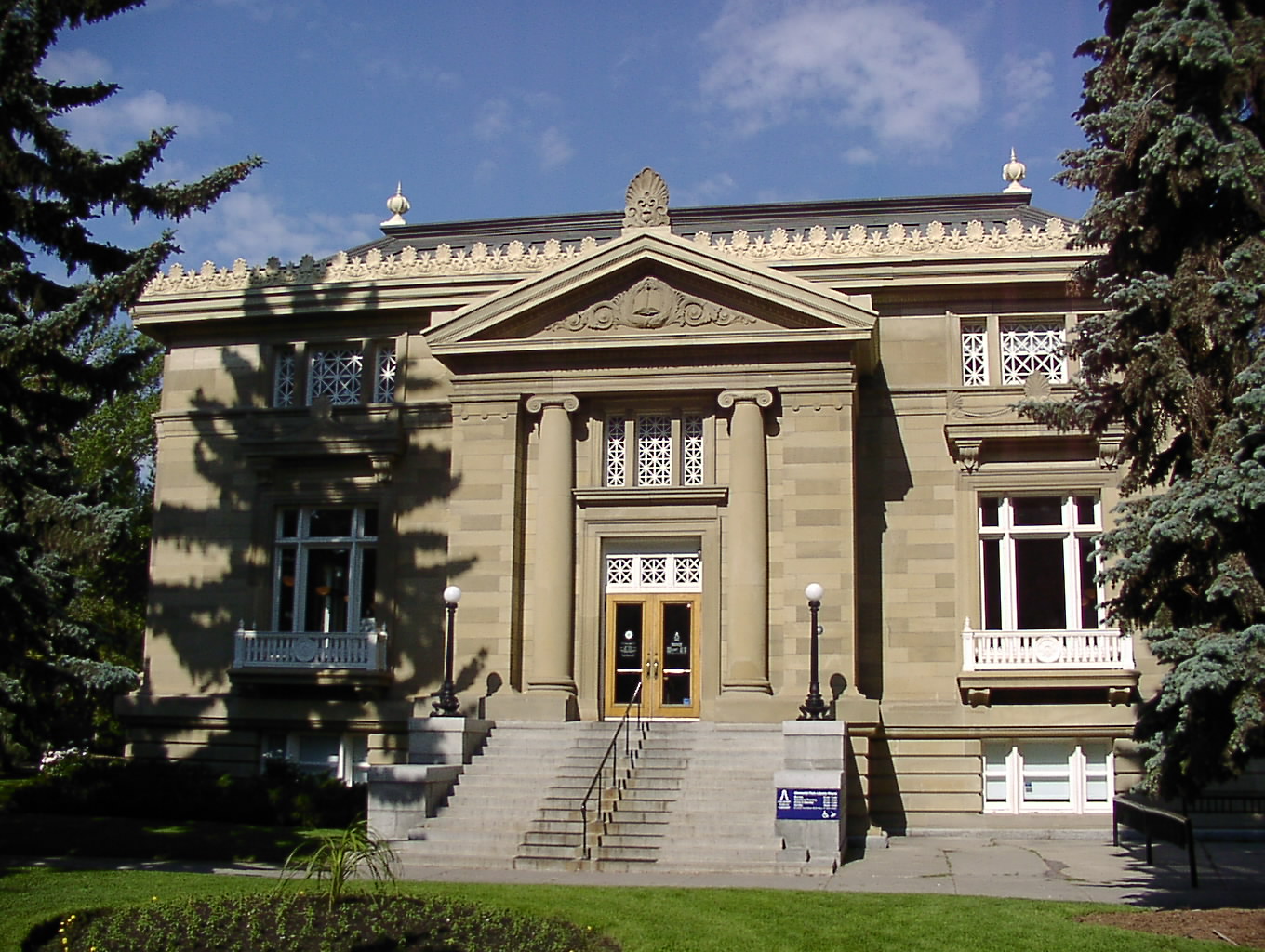If you’re a fan of public libraries, you’ve probably heard of Andrew Carnegie. A Scottish-American businessman who believed that the rich should use their wealth to improve society, in 1898 he began donating money to build public libraries in the United States and around the world. The funds were used to erect buildings, while municipalities were responsible for buying books and covering operating costs. Memorial Park Library in Calgary, Alberta was one of the libraries built thanks to a Carnegie grant.
Carnegie Libraries in Canada
Of the 2,509 libraries built using money from the Carnegie Corporation, 125 were in Canada, including three in Alberta. The first grant was given to Windsor, Ontario in 1901 and the last to Ottawa in 1917. In total Carnegie donated $2,556,660 to build libraries in Canada.
This article lists some of the features common to many Canadian Carnegie libraries:
- large and stately
- built with limestone or brick
- one storey with a raised basement
- symmetrical with a central entrance and two windows on each side
- Greek and Roman style arches and columns
- plaques or photos honoring Carnegie
- fireplaces
- large windows
- separate reading rooms for men and women
Memorial Park Library
Built between 1909 and 1912, Memorial Park Library was the first public library building in Alberta. Alexander Calhoun, Calgary’s first librarian, campaigned tirelessly to raise funds for the building. The cost was $100,000 with 80% provided by Carnegie.
[Update: A reader pointed out that the fundraising was actually done by Annie Davidson, a founding member of the Calgary Literary Club. The Memorial Park Library website also states: “The effort to build it was spearheaded by Annie Davidson, one of Calgary’s cultural pioneers, beginning in 1906. As the founder and president of the Calgary Women’s Literary Club, Davidson organized a petition to prove to City Hall that there was enough interest to support a public library in Calgary.“]
The library is situated on land donated by the federal government in 1899. The surrounding park is modeled after a Victorian garden with geometric paths and beds.
The Alberta Register of Historic Places describes the building as “a classically-inspired, early twentieth-century, two-storey sandstone building located on 1.93 hectares in Central Memorial Park in downtown Calgary… An east facing portico set atop a series of granite steps is adorned with Ionic columns and a skilfully carved pediment, creating a dignified entry into the library. The building is topped with a low hipped roof, and expertly executed decoration.” (Click here for even more physical details of the building and site.)

I have twice visited Memorial Park Library. Although in some ways it’s less convenient to use than modern buildings (those stairs!), I love the historic feel and the connection to other Carnegie libraries across the country.
Conclusion
This article states it well, “Carnegie libraries were expressions of the hopeful, thriving spirit of new communities, were designed to serve as prominent landmarks, and encouraged people to build greater community connections. Over a century later, Canada’s remaining Carnegie libraries still function with the same intent.”
Sources
- “Andrew Carnegie and the Canadian Carnegie Libraries” via Celsus
- “Carnegie’s Canadian Libraries” via Canada’s Historic Places
- “Central Memorial Park” via City of Calgary
- “Memorial Park Library” via Alberta Register of Historic Places


The Carnegie of the North Country of NY was A. Barton Hepburn; two friends are touring all the Hepburn libraries in the area. They all have a cross-shaped floor plan; most are Colonial Revival in style. Perhaps Mr. Hepburn was imitating Mr. Carnegie. Here are a couple of links: https://www.waddingtonlibrary.org/ http://www.hepburnlibraryofnorfolk.org/
Thanks for the links. And I love that kind of challenge. I visited all but one of the Calgary library branches, but then they opened more!
Dear Ms. Bond,
I believe a committee from Calgary visited Attleboro, Massachusetts to visit a library which architects McLean and Wright of Boston had designed and finished in 1907. The committee then invited M&W to design a near twin of the Attleboro building for Calgary. Attleboro’s library is not, by the way, a Carnegie funded library. Enjoy your explorations!
Walter
Thank you for your comment, Walter. That’s so interesting!